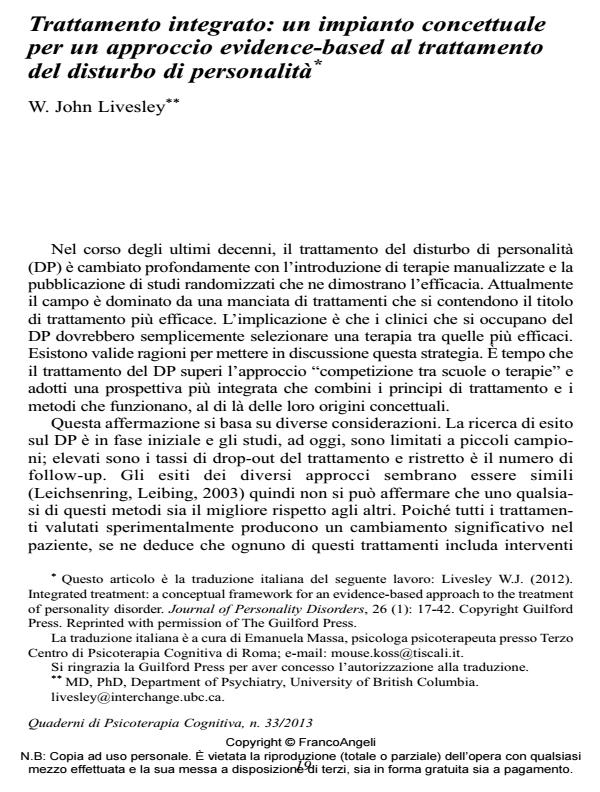Integrated treatment: a conceptual framework for an evidence-based approach to the treatment of personality disorder
Journal title QUADERNI DI PSICOTERAPIA COGNITIVA
Author/s W. John Livesley
Publishing Year 2013 Issue 2013/33
Language Italian Pages 33 P. 19-51 File size 199 KB
DOI 10.3280/QPC2013-033003
DOI is like a bar code for intellectual property: to have more infomation
click here
Below, you can see the article first page
If you want to buy this article in PDF format, you can do it, following the instructions to buy download credits

FrancoAngeli is member of Publishers International Linking Association, Inc (PILA), a not-for-profit association which run the CrossRef service enabling links to and from online scholarly content.
Evidence that various therapies are effective in treating personality disorder and that outcome does not differ substantially across treatments suggests that it is time to replace concerns about the efficacy of specific therapies and which form of therapy to use with an evidence- based approach that combines methods that work from all therapies. A framework is proposed for selecting and combining eclectic treatment methods and delivering them in a coordinated way. The framework has two components: (1) a system for conceptualizing personality disorder based on empirical knowledge about the structure, etiology, development, and stability of personality pathology to use as a guide to selecting interventions and planning the sequence in which they will be used; and (2), a model of therapeutic change based on the general literature on psychotherapy outcome and specific studies of PD treatments. The framework proposes that integrated treatment be organized around general principles of therapeutic change common to all effective therapies supplemented with more specific treatment methods taken from the different therapies as needed to tailor treatment to individual patients and treat specific problems and psychopathology. The coordinated delivery of such a diverse array of interventions is achieved by using a phases of treatment scheme that proposes that treatment focus on specific symptoms and problems in a systematic and orderly way according to their stability and potential for change.
W. John Livesley, Trattamento integrato: un impianto concettuale per un approccio evidence-based al trattamento del disturbo di personalità in "QUADERNI DI PSICOTERAPIA COGNITIVA" 33/2013, pp 19-51, DOI: 10.3280/QPC2013-033003